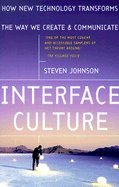What do you think?
Rate this book


Paperback
First published January 1, 1997
LOAD "*",8,1" and writing programs in BASIC, sometimes typing hundreds of lines of code from a magazine -- a paper magazine! That printed programs that you would manually type in!)
A nice meditation on the role of computer interfaces in shaping modern culture. Also, a gift from Amy.